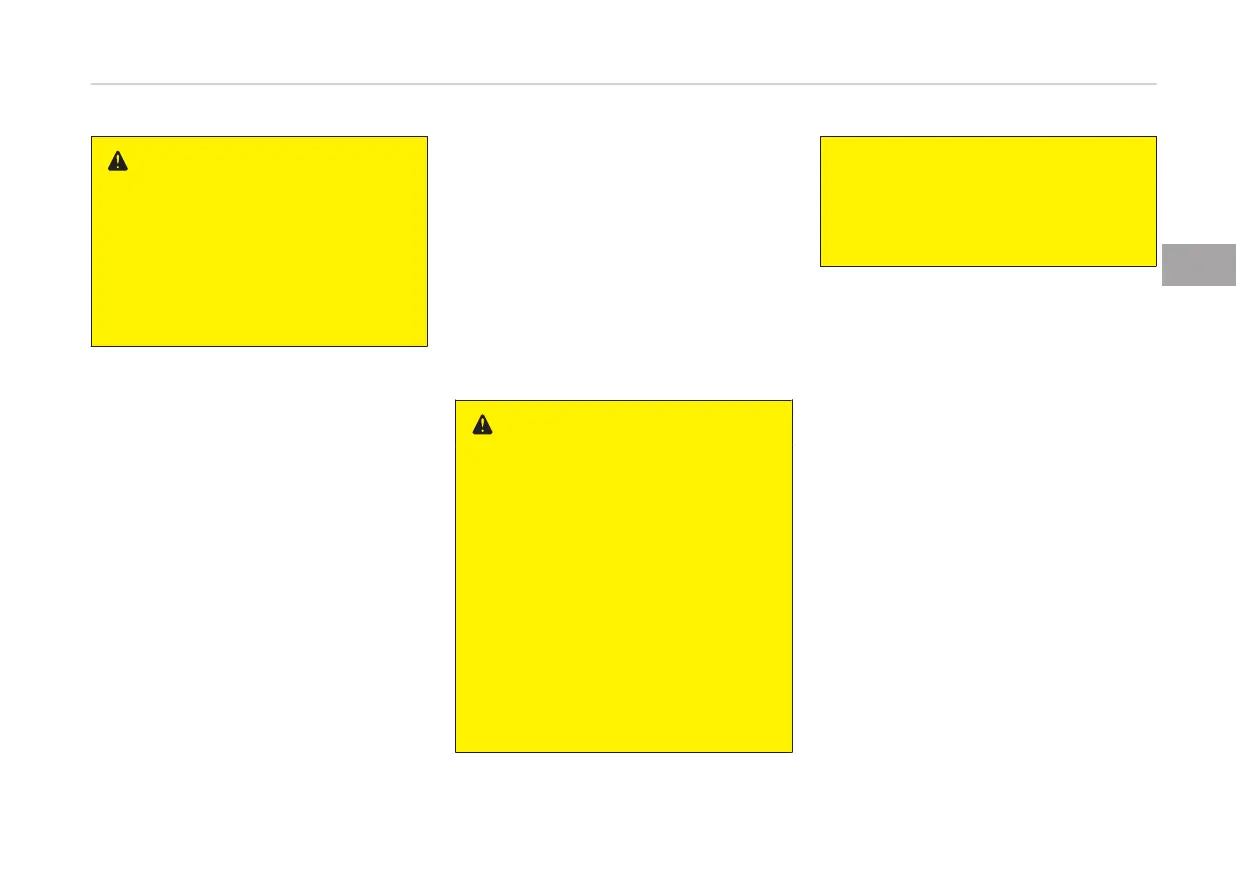WARNING
n
Pregnant women
Pregnant women must never place
the lap portion of the safety belt
over the area of the abdomen where
the fetus is located or above the ab‐
domen where the belt could crush
the fetus during an impact.
Injured person
A seat belt should be used when an in‐
jured person is being transported.
When this is necessary, you should con‐
sult a physician for recommendations.
One person per belt
Two people (including children) should
never attempt to use a single seat belt.
This could increase the severity of inju‐
ries in case of an accident.
Do not lie down
To reduce the chance of injuries in the
event of an accident and to achieve
maximum effectiveness of the re‐
straint system, all passengers should
be sitting up and the front and rear
seats should be in an upright position
when the vehicle is moving. A seat belt
cannot provide proper protection if the
person is lying down in the rear seat or
if the front and rear seats are in a re‐
clined position.
WARNING
Riding with a reclined seatback in‐
creases your chance of serious or fa‐
tal injuries in the event of a collision
or sudden stop. The protection of
your restraint system (seat belts
and air bags) is greatly reduced by
reclining your seat. Seat belts must
be secured against your hips and
chest to work properly. The more
the seatback is reclined, the greater
the chance an occupant's hips will
slide under the lap belt causing seri‐
ous internal injuries. Also, the shoul‐
der belt may strike the occupant's
(Continued)
(Continued)
neck. Drivers and passengers should
always
sit well back in their seats,
properly belted, and with the seat‐
backs upright.
Care of seat belts
Seat belt systems should never be dis‐
assembled or modified. In addition, care
should be taken to assure that seat
belts and belt hardware are not dam‐
aged by seat hinges, doors or other
abuse.
3-29
3
Safety features of your vehicle

